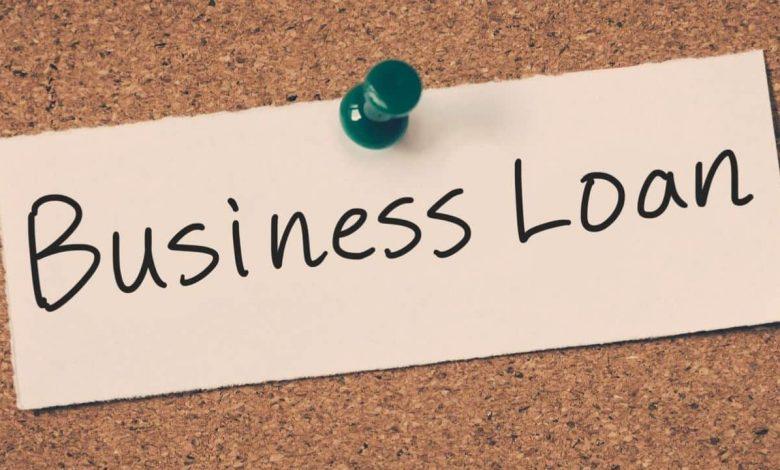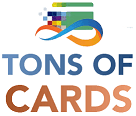Loans for Small to Mid Sized Businesses. The Six Types of Loans Available to Business Owners
Line-of-credit loans, Installment loans, Balloon loans, Interim loans, Secured and Unsecured loans, Letter of credit

It can feel frustrating when a business owner gets denied a loan especially back before there was any other options available. However, now with the introduction of many other loan types, obtaining the loan that fits your business needs is within reach. With these other options a business now have other options to obtain the capital that they need to start a business, improve their business, or expand their business. Along with this, you must remember that making informed decisions about a loan is equally as important so that you receive a smooth loan process and have the available capital ready for use. To give you an idea of the available loans, we’ve listed six that are commonly available.
1. Line-of-credit loans
With a line-of-credit loan you get a bank loan that is flexible. It is equivalent to receiving a certain amount of cash like a credit card offers and can be used when you deem fit. You can then make payments over a set amount of time or all at once. Because it is a loan, a line-of-credit loan also apply interest from the time borrowing occurs and upon bank approval. The rate of interest is normally variable so there is no knowing what the price of the loan will actually be. A line-of-credit is also considered a lower-risk option, however complicating the earnings of a bank due to the continued fluctuation of the balance after credit approval has been granted. With a regular loan, bankers have very little interest in approving “one-time” loans even though they do it. This can be viewed the same also for borrowers that obtain a loan, pay it and then reapply for more, it just makes no sense. When a line-of-credit is utilized it is able to remedy any issue by allowing a set amount of funds to be accessible when ever it may be needed by the borrower.
Usefulness of a Line-of-credit
At the end of the day, the purpose of line-of-credit loans is not to make single acquisitions like vehicles or a home, although they can be used for items that a bank loan won’t be underwritten for. Often times, a line-of-credit is utilized the same way whether it is for personal or business purposes. Whether it is used to cover expenses or financing future projects where the amount needed is not exactly known at the time.
Pros
• 100% can be drawn
• Able to cover temporary cash shortages
• Perfect for projects that occur over time
• Not many restrictions
• Use what you need
• Can turn it into a secured loan
Cons
• Variable rate of interest increases along with regular interest rates
• Charged maintenance fee on a monthly/yearly basis
• Rates are higher than loans with fixed-rates
• Banks determine the APR and fees
• Unable to determine the exact chargeable interest
2. Installment loans
When you apply for an installment loan you are getting one of the most commonly obtained loans by borrowers. An installment loan is a loan that borrowers repay through installments. All payments made on the loan go towards the principal and interest of the installment loan. The factors that control a payment amount made each month involve the loan’s amount, the loan’s set term, and interest rate.
Installment Loan Fundamentals
An installment loan is normally seen with loans pertaining to mortgages, vehicles, or private use. Except with a mortgage, which can often be seen with rates that are variable, an installment loan has a rate that is fixed for the life of the loan. This provides an easy way for budgeting so that payments are made monthly.
Deciding to use Collateral
When applying for an installment loan you have the option to use collateral or not. Good examples of collateral are the homes that a mortgage is opened for or the vehicle that the loan is obtained for. Sometimes an installment loan is considered to be a personal loan that requires no collateral. A loan like this is determined by the borrower’s credit, credit score, and their financial ability to make payments.
Steps of an Installment Loan
The steps of an installment loan begin with a borrower submitting a lender application and explaining the reasoning for the loan. The bank representative then meets with the loan applicant to talk about available options regarding the loan terms, any down payment, amounts, and payment dates. Once received, borrowers make their monthly payments and are able to save money on interest if a pay-off is made before the term expires. Make sure to inquire about a pay-off so that you don’t get penalized for prepayment by making it too early.
Pros
• Flexibility and tailored to borrower’s needs
• Low interest rate
• Possible refinancing for lower rate
Cons
• Interest payments may be higher than market rates
• May feel stuck in the loan obligation
3. Balloon loans
Another loan type is known as a balloon loan. With a balloon loan, the full amount does not reduce as much as you think over time. Because of this, a borrower must make a one time “balloon payment” at the loan’s expiration date in order to satisfy the full balance. A balloon loan is a great option for borrowers who prefer short-term loans due to their decreased interest rate as opposed to a loan having terms that are longer. Keep in mind that it carries risks with refinancing as the interest rate may become higher.
The Balloon Loan Process
Balloon loans are best matched with a mortgage. These are known as a balloon mortgage that is set up as a short-term loan lasting at least five years. Regardless, the loan payments that are paid monthly are not designed to secure the full repayment of the loan. What happens is the mortgage payments get figured to reflect traditional mortgages. With that, the balloon loan has a distinct structure for payments as compared to other loans. This is because when the short term ends, only a small amount of the principal has been paid, which makes the remaining due at that time. When this point is reached, borrowers can decide to refinance their mortgage or have the home sold in order to have the payment made. If all else fails, then cash may be used to make the full payment as well.
Pros
• Possibility to refinance at lower rate
• No full effect of high interest
• Monthly payments are low
Cons
• Defaulting if unable to make balloon payment
• Inability to sell if home prices fall thus unable to pay balloon payment
• Receiving a high APR after refinancing that causes higher payment amounts
4. Interim loans
An interim loan is often referred to as a bridge loan. These loans are for short-term purposes and are made while waiting for financing that will be long-term or when another debt is being repaid. This permits the borrower to take care of existing debts by furnishing funds. They are for short-term use, are secured with collateral, and involve higher APR.
Interim Loan Process
An interim loan works as a bridge during a point where financing is not quite ready to be given. These loan types can be set up in ways that benefit individuals or businesses for whatever situation they may need help with. An interim loan is able to be obtained by a homeowner who wishes to buy another home as they wait for the sale of an existing home. The equity of the current home can also be used as the new home’s down payment while they wait. The homeowner is then able to gain time and relax as they just need to wait for their existing home to be sold. Interim loans are usually associated with an inflated interest rate as compared to equity lines of credit. Plus, if a mortgage has not been paid off, then you will be stuck with two loan payments if the home does not sell quickly.
Pros
• Loan is short-term
• Ability to shop for a new home
Cons
• Growth in debt
• High risk
• Interest is extremely high
5. Secured and Unsecured loans
An unsecured and secured loan is the two main methods that most people fall under while applying for funds. They are aptly named such to cover unsecured and secured debt. What differs between them is the use of collateral that backs up the debt and is a security in case of default.
Unsecured Loan Debt
Debt that is considered as unsecured is not backed by collateral. In order for a lender to collect on a loan default, they must file a lawsuit in order to recover the defaulted amount. A financial institute that provides funds on an unsecured basis is determined by the credit of the borrower as well as their word to make payments. So what banks normally do is apply interest that is higher. Plus, the requirement for the debt-to-income ratio and credit score are more extreme and better off for individuals who are notably credible. But if you know that your credit is worthy, then you will be able to enjoy a loan that is one of the best on the market.
Secured Loan Debt
With secured loan debt a borrower is putting a piece of asset as collateral to secure their loan. When a piece of collateral is used it secures the loan from any default that may happen. This allows the lender to claim the collateral as equal value as the loan amount.
Pros
• Greater amounts can be borrowed
• Significantly low interest on secured loans due to lower risk
• Possible tax breaks on paid interest
Cons
• Amount can only be used for the purpose of the loan
• High risk of losing the collateral if default occurs
6. Letter of credit
Letters of credit is made by a bank that is backing a payment from a buyer that certifies it will be made for the amount and not late. If a buyer is unable to hold up their side of the deal, then the bank must make the payment for the balance remaining. When it comes to dealing internationally such as distance, laws, and not personally knowing all parties, letters of credit get continuously discussed when trading internationally.
Process of Letters of Credit
Letters of credit are loan instruments that you can negotiate and have the bank pay which ever designated beneficiary. For letter of credit’s that are made transferable, it can be allocated to a whole other institution.
Kinds of LOC
• Confirmed
• Commercial
• Traveler
• Revolving
Pros
• Secured payment method
• Bank absorbs the risk involved
• Security of the letter is assured
Cons
• Trustworthiness falls on the bank
• Careful dates of expiration
• Possible delays if modifications are necessary
• Is not cheap

